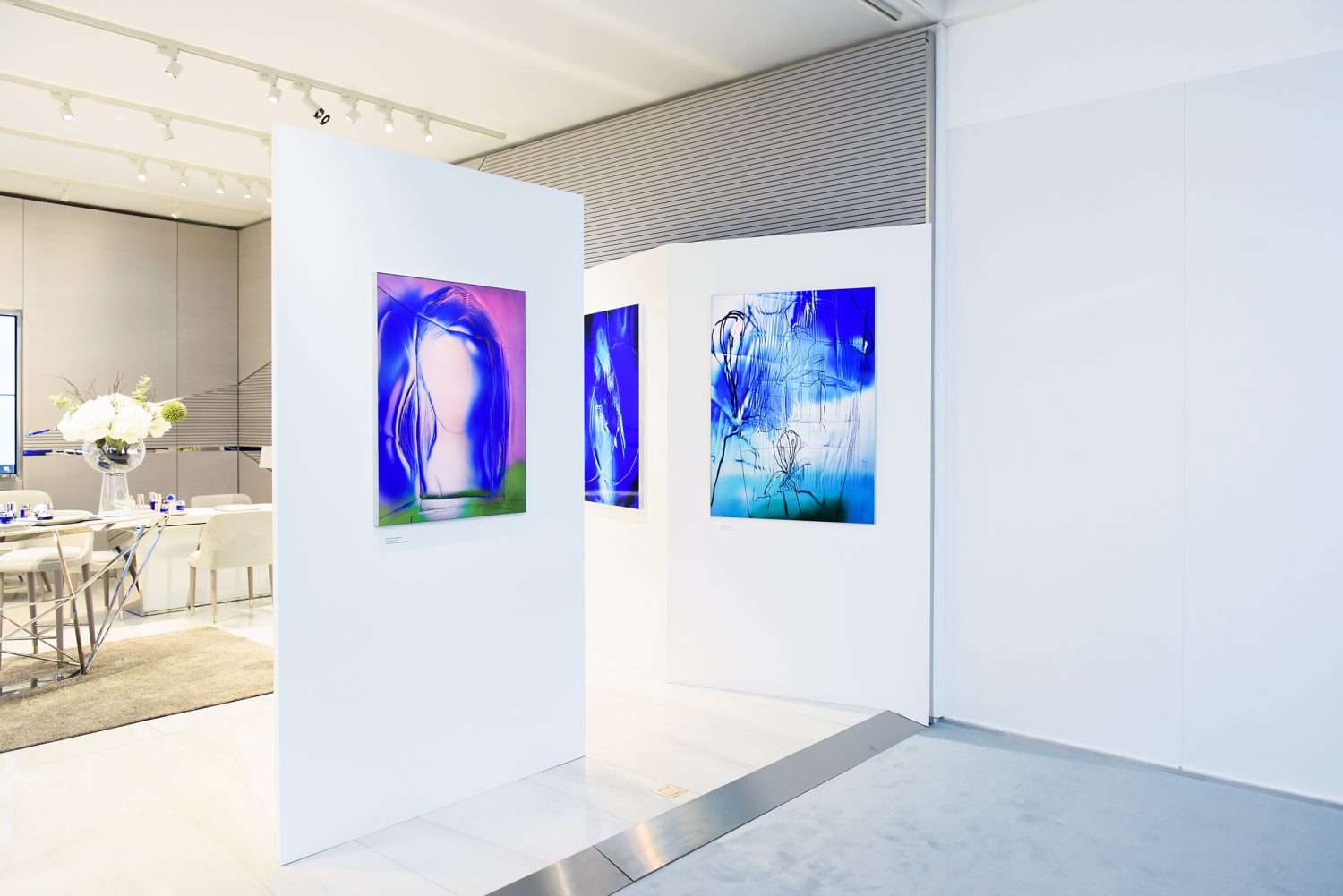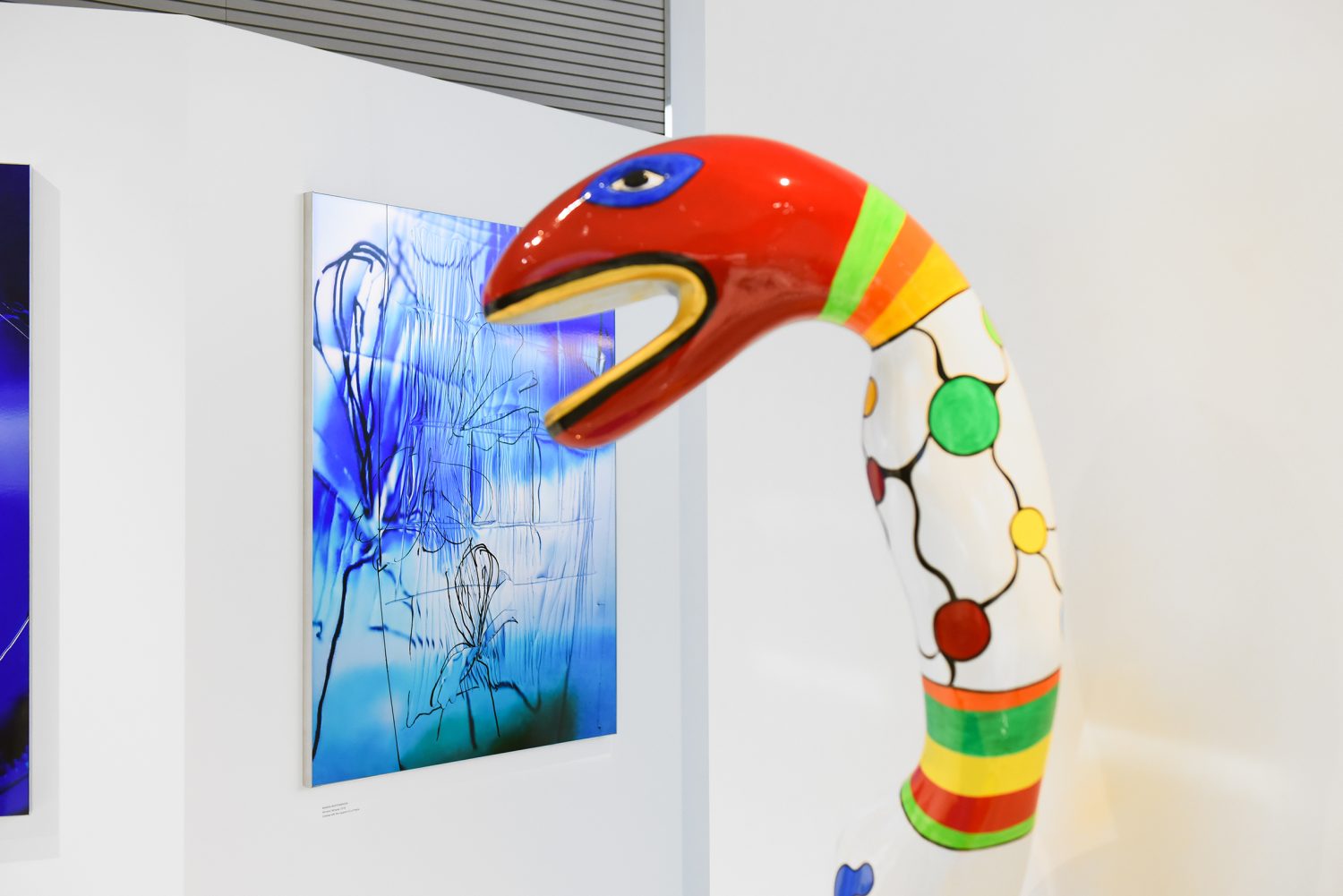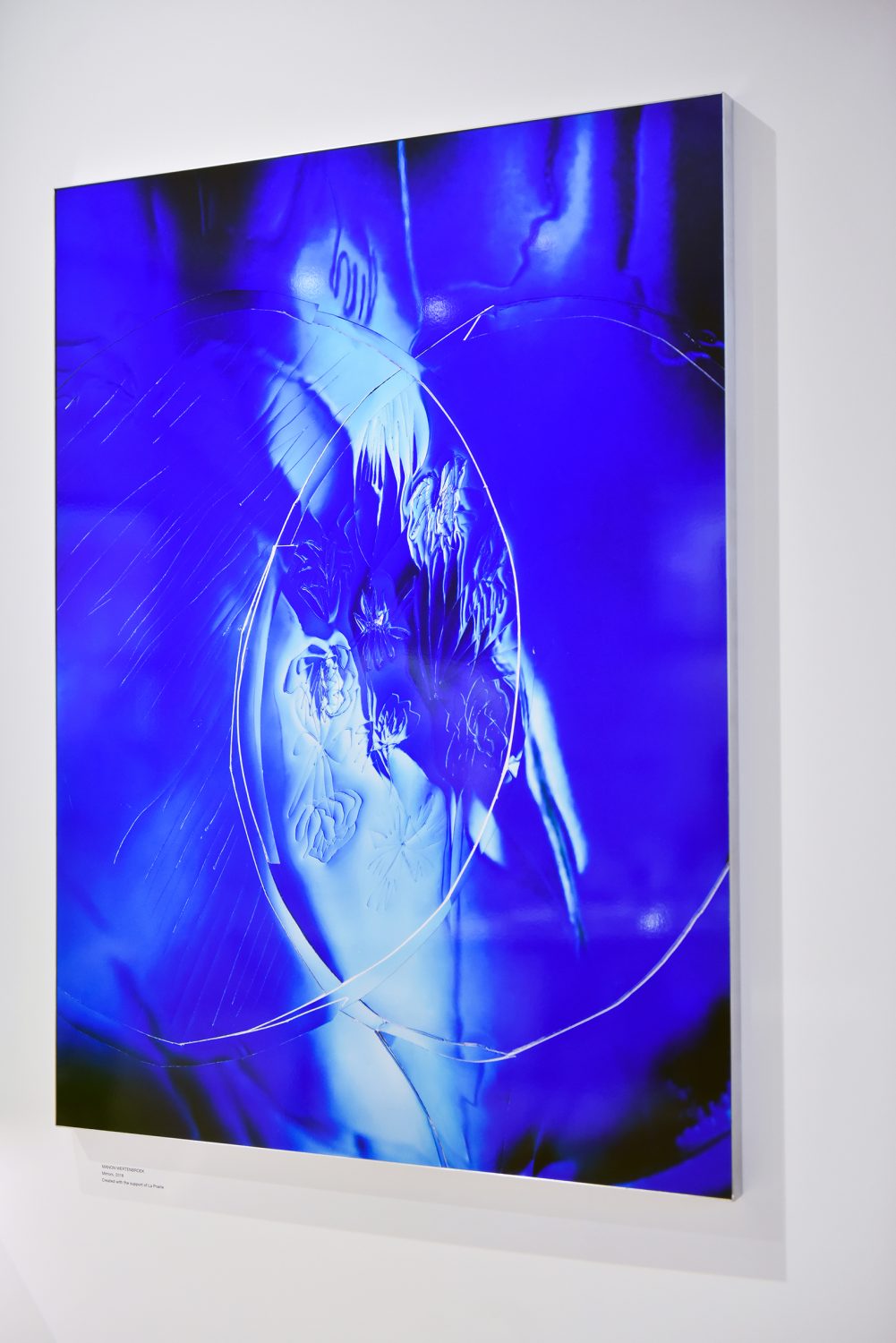Manon Wertenbroek
In conversation with Niki de Saint Phalle
Niki de Saint Phalle’s work was unapologetically introspective, yet always instinctive
Through a unique use of photography, Manon Wertenbroek, the Swiss artist born in 1991, explores human interactions and the emergence of emotions. On the occasion of Art Basel she presents three new images in dialogue with Niki de Saint Phalle’s iconic Pouf serpent bleu. Both artists “meet” on a invitation by La Prairie around the values of the house : science, aesthetics, and indulgence.
Your photographic work includes engraving and sculpture. How did you come to develop this technique?
I studied photography at ECAL (Ecole cantonale d’art de Lausanne), I always wanted to do visual art, but it was so free that it terrified me. I turned to photography because I wanted to work with a concrete medium. I was attracted by the technical aspect of photography, it being a frame that both flattens the light but also makes it possible to sculpt it. I loved creating sets, making contexts that would make it possible to stage images while being able to work on the difference between 2D and 3D. I wanted to manipulate different types of layers and superimpose them using photography. I very quickly used mirror paper, cut it out, and created a lot of volume in the images. Then I started to put pieces of colored paper in front of my drawings. The relationship to color and light evolved when I started working with my computer screen and its backlit colors. This is what brings an enigmatic aspect to my work, an atmosphere linked to introspection.
In Art Basel you presented three images : “Mirrors”, “Blue portrait” and “Window Glimpse”. These almost have a pearled reflective surface using this very introspective cobalt blue, through which we perceive ghostly figures. What’s the story behind these new works?
Most of my images are about portraiture. They’re almost self-portraits. They are related to interactions between people, and I am very interested in emotional distance. For “Mirrors”, “Blue portrait” and“Window Glimpse” I started from cobalt blue, which is both the iconic color La Prairie’s Skin Caviar Collection and that of Niki de Saint Phalle. It was a real challenge to work with this intense blue which has a dreamy and introspective side. It is a color as nostalgic as it is powerful; and it is this duality that interested me. “Mirrors” represents it well: it is an enigmatic object of introspection, which can be misleading at times because you won’t ever perceive reality looking at it. The mirror is always in the background in my work. “Blue portrait” directly evokes the mirror as we see people appearing as ghostly figures. Each of the images has a dreamy side, they are completely linked to the values of La Praire which are indulgence, aesthetics and science. “Window Glimpse” is a stealth reflection in a window. This photograph evokes our relationship to our own reflection, the moment when we are exposed to our image and the surprise, the fear of being seen looking at ourselves. It is this moment of tension that I wanted to show, the intimate and social duality of our relationship to beauty.

The use of the mirror reminds me of “The fiery mirror” written by historian Anne Marie Sauzeau, in which she talks about the relationship of certain 70s feminist artists to the mirror. Were you inspired by historical elements?
Before production, I do a lot of research. For this project, I was interested by the Etruscan mirrors of the 6th century B.C. They were used for beauty rituals; on the surface were engraved ornamentation scenes. For the Etruscans, ornamentation is the social aspect of identity. I am very interested in psychology, I recently did a project with the Centre Interfacultaire en Sciences Affectives of the University of Geneva where neuroscientists work on interactions, on what emotions are used for, and on how we interact using them. It is emotional regulation. The idea of identity comes through my photographes. Even if there is obviously an autobiographical path, it is important to bring interaction and introspection towards the universal.
Research is the first step to your work. Two others steps are most crucial to your work : the experimental and instinctive time spent in the workshop, and the time of the shooting.
Workshop practice is when I try to translate the themes we mentioned. I create digital illustrations, which are backgrounds made of blurred colors, and it allows me to work on a more emotional level. Whereas with engraving, I try to convey allusive elements. It is this moment of dialogue between engraving and color that will generate the narration. Then I run tests with my iPhone. The shooting of the final photograph takes place in the studio. I rework these “test” images with a high resolution camera and a macro lens. These images are then printed on metallic paper, which gives it its shine.
This duality in your process also brings up the question of scale.
In the beginning, the engravings are very small. I work on very meticulous formats like a seamstress would do, I am very comfortable with small formats. Photography really allows me to go to another scale, to be free in the choice of the image’s format.
Does working with a luxury house allow you to grow as an artist?
As a young artist, being supported by a house like La Prairie allows me to do other personal projects and creates visibility for my work. There is a pleasure in the freedom of creation they left me. What La Prairie gives me is support as a patron to create works. The perfect example is my presence at Art Basel with them.



When in 1961 Niki de Saint Phalle made her first “Tirs“, a performance at the crossroads of sculpture and painting, she used media like television to document and broadcast her work. Last year you produced an Instagram exhibition for La Prairie, how do you approach this idea of a network?
I am not extremely focused on “self-promotion”, but today it seems inevitable to me to use social platforms like Instagram. People have access to the work of artists through those canals. Compared to art, there are advantages and disadvantages, for example there is the problem of loss of scale. To apprehend a job, you need to see it and experience it. The only downside is that people no longer go see exhibitions, they only experience them through a screen. But it is also up to us artists to think about new ways to produce images. I’m constantly thinking about how to present my work, especially on online networks. For the Instagram exhibition, I chose the images according to the criteria of diffusion, I made a strategic choice. A lot of artists have to ask themselves that question.
Niki de Saint Phalle said that she had “a woman’s delusions of grandeur, that of women in today’s world, that of a woman in power”. As an artist, she has developed an activist and emancipatory work. In a time when “Me Too” is spreading, how do you position yourself in relation to these issues?
The crazy thing is that in 2018 women are less advantaged than men, and this goes for women artists as well. We get stereotyped very quickly. Being inspired by Niki de Saint Phalle was important, she was never afraid to speak her mind. This is a side of her character that touches me deeply. I’m always trying to be that honest, and not letting myself be influenced by other people’s opinions. It helped me to move quickly in my work. Niki de Saint Phalle’s work was unapologetically introspective, yet always instinctive. We owe ourselves to take responsibility, and that’s what I’m trying to achieve with my work: to good deep inside and to not be afraid of what would come out of it. An artist like Niki de Saint Phalle makes you want to keep fighting for what you believe in.
Interview : Georgia René-Worms
Portrait and photos: Jean Picon












